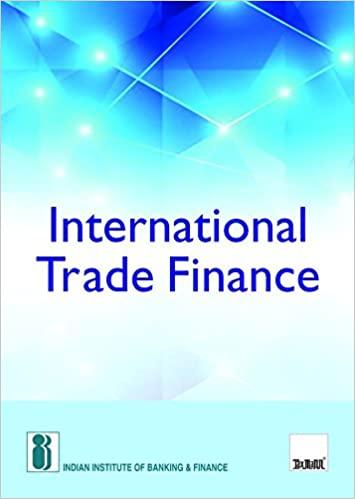Question
Problem 1. Time value of money. 1. You deposit a principal P in an account with interests compounded annually. The annual interest rate is r
Problem 1. Time value of money.
1. You deposit a principal P in an account with interests compounded annually. The annual interest rate is r > 0 for all of the n years. At the end of the third year, your account reaches 908.22 dollars and keeps growing up to 977.61 dollars at the end of the fifth year, and 1091.77 dollars at the end of the last year. Determine r, P and n. Round to the nearest hundredth for P , and keep three significant figures for r (for example, 1.00%).
2. Assume that the interest rate is 4% compounded monthly. Roy buys 100 shares of Moogle company, at the market price of $30 per share. For this he borrows the money from the bank. Assume that after six months he sells the shares for a price of $S per share. Find the minimal S for which Roy has enough money to fully pay back his loan to the bank. (Round to the nearest thousandth)
3. Assume that the interest rate is 4% compounded monthly. Ingrid short sells 100 shares of Vber company, at the market price of $30 per share and deposits the money from this deal in a bank account. Assume that after five months a share of the company is worth $25 and she exits the short position (by taking the required money from her account). How much money does she have in her account right after exiting the short position. (Round to the nearest thousandth)
Step by Step Solution
There are 3 Steps involved in it
Step: 1

Get Instant Access to Expert-Tailored Solutions
See step-by-step solutions with expert insights and AI powered tools for academic success
Step: 2

Step: 3

Ace Your Homework with AI
Get the answers you need in no time with our AI-driven, step-by-step assistance
Get Started


